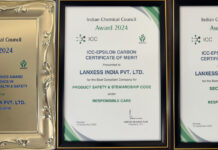Urban designer Aeshna Prasad is quickly becoming a name to know in the global conversation on equitable cities, climate-responsive design, and participatory planning. From co-founding a civic-tech venture in India to leading city-scale masterplans across the Middle East and the United States, her trajectory maps not just geographic reach but disciplinary breadth — combining design, ecology, infrastructure, and policy into implementable urban strategies.
A graduate of Harvard University and recipient of its Award for Outstanding Leadership in Urban Design, Prasad was also named an India Design Leadership Fellow — a prestigious grant awarded to promising young professionals demonstrating national impact through design. Today, she brings that ethos to her role at Sasaki Associates, an award-winning global design firm, where she has led and co-authored transformative urban frameworks. Her projects span the Jubail Island Masterplan in Abu Dhabi, the Greater Salalah Structure Plan in Oman, and the Pittsburgh 2050 Comprehensive Plan in the U.S. — each one reimagining how cities can better serve people, ecology, and future economies.
“I’m interested in how we can structure cities not just as products of real estate, but as vehicles for state capacity, social mobility, and environmental stewardship,” Prasad says. That belief is perhaps best exemplified in her early initiative, Sahayak — a civic-tech platform she co-founded in India to respond to labor displacement during the COVID-19 lockdown. The project secured over $30,000 in competitive funding, including the Harvard Innovation Labs Spark Grant and the Mittal Institute’s Seed for Change grant. While pandemic constraints halted its implementation, Sahayak remains a compelling model of how data-driven mapping can support decentralized employment ecosystems and reduce forced migration from rural regions.
Prasad’s approach to design is as methodical as it is visionary. In Abu Dhabi’s Jubail Island — a sensitive mangrove habitat — she shaped a carbon-neutral development framework using hydrological models and pioneered a metrics-based scenario planning methodology that was critical to client approval. The strategy has since cleared 23 of 24 government approvals, positioning it for phased rollout as part of the UAE’s COP 2030 development commitments.
In Oman, she is currently working on the Greater Salalah Structure Plan — a large-scale city and regional strategy that balances development, heritage preservation, and climate resilience. As part of this ongoing project, she has worked on macro-scale visioning and gone on to co-author the planning guidelines which are now under review by the Ministry of Housing and Urban Affairs – with the potential to serve as the regulatory framework for all future development in the region.
Her U.S.-based work mirrors this ethos. From decarbonization strategies in Utah Tech University’s Innovation District to co-leading and designing the flagship “90-to-1” exhibition for Pittsburgh’s comprehensive plan, Prasad merges design excellence with civic engagement — crafting plans that are as inclusive as they are implementable.
Beyond professional practice, she is an invited juror at institutions like MIT and the Boston Architectural College, a TEDx keynote speaker, and a contributing researcher to the Museum of Modern Art’s landmark publication The Project of Independence. Her forthcoming publication on Incremental Housing, co-authored with urbanist Rahul Mehrotra, builds on years of fieldwork and research on how the state can reimagine housing as infrastructure in the Global South.
Whether working with municipalities or ministries, Prasad brings a global lens to deeply local challenges — standing at the vanguard of a new generation of Indian design leadership influencing cities worldwide.



















